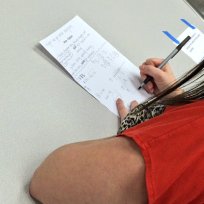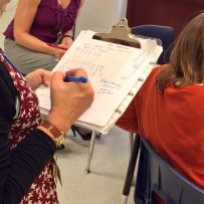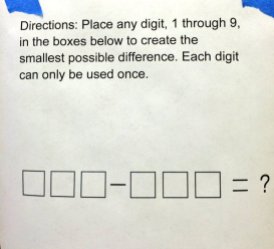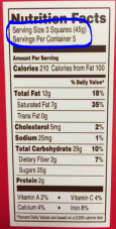
Here are links to all the posts I wrote this week:
Friday
If you’ve been following along this week, you’ll notice there’s no post for Thursday. That’s because I stayed home sick. I did check a few emails, but mostly I slept or lounged around the house feeling crummy. Not very exciting material to blog about. The highlight was going out in the backyard to refill the squirrel and bird feeders.
Granted, I took it slow today so I’m not sure how exciting today was either. I felt well enough to get up and go in to work, but after an hour or two, my energy level dipped and stayed low throughout most of the day. As I was getting ready to write this post I tried recalling my day and realized I did so many little things I couldn’t remember a lot of what I’d done! Thankfully much of it revolves around email, so a quick review of my Sent email folder did a pretty good job of refreshing my memory.
My first main task this morning was preparing our STAAR Ready assessment to be converted into Braille. The STAAR Ready is our spring district assessment for grades 3-5. Usually each subject area uses the previous year’s released state test. Unfortunately, Texas did not release the 2015 math tests so we had to put one together ourselves. Using the state test blueprints, we pulled one together for each grade level using sample items released by the state last summer and our own items we wrote for last year’s STAAR Ready. That was quite the ordeal right before and after winter break, and I’ll spare you the specifics. Needless to say, I’m looking forward to using the 2016 released tests next school year!
Anyway, back to today, I had to convert the PDF of the 5th grade assessment to a Word document because reproducing the test in Braille, especially the graphics, works much better in Word. Thankfully Adobe Pro makes converting a PDF to Word super easy, but that doesn’t mean the resulting document is flawless. I went through the Word document question by question to ensure text and/or graphics converted correctly. For the most part they did, but every now and then a table or fraction didn’t convert correctly so I had to fix it.
Once that was done, I stopped to review our department budget. This is one area of the job that was new for me when I started a year and a half ago. I haven’t really had to do a lot with budgeting in previous jobs. My department is only two people, me and Regina, but we have a department budget that we use to pay for:
- Substitutes so teachers can come work on curriculum
- Extra duty pay to teachers or coaches to do after hours curriculum work
- General supplies – office supplies, professional books, etc.
- Memberships to groups such as TASM and NCTM
- Registration to conferences
- Snacks for teachers who attend PD sessions
- Other miscellaneous expenses
Since our budget is limited, I have to monitor how we spend our money as well as plan ahead to ensure we can pay for the things we want. For example, bringing in K-5 teachers for a few days in the spring to do curriculum revisions with us is probably our largest expenditure each year, so I have to keep that money untouched for most of the school year.
This morning I went through my budget, determined where money needed to be moved around to, and then sent off a request to make that happen. That’s one of the lessons I’ve learned in this role: We are highly accountable for our money and how it’s used! There are very strict policies and procedures surrounding it. For example, I can’t just spend willy-nilly. If I want to buy snacks but all of my money is in extra duty pay, then I have to submit a budget amendment for approval before I can spend the money. Most likely it’s going to be approved, but that goes to show how firm they are about the process. Considering our district is funded by tax payer money, they want to ensure we are using our money responsibly, ethically, and legally. And we must be doing something right, because we’re the only district in the state of Texas to earn a AAA bond rating from Fitch and Moody’s. (I had no idea what that meant at first, but apparently it speaks to how fiscally responsible we are.)
Speaking of money, once I sent off that email, I hopped in the car and drove over to our Purchasing department to pick up my new Purchasing credit card. This is what I use to pay for small expenses such as food if I’m traveling out of town or if I’m at a conference and want to pay for some books. I was supposed to pick up the card back in December, but I’d been so busy I never felt like I could get away to go pick it up. Thankfully I can check that off my to-do list finally!
Now that I think a bout it, today was a very financial day for me. Once I got back to the office, I had to do some work with two orders that I recently submitted for the books Beyond Pizzas and Pies and Beyond Invert and Multiply and sets of Cuisenaire rods. All of the materials are going to our campus libraries, so I needed to communicate with them to let them know that the orders are going to be coming in soon. First I had to talk to our Library Coordinator to give her the information so she could create records of the items in our library system. Then I shared a spreadsheet with the campuses where they can log when the orders are received so we can then pay the vendor for the materials. The teachers who attended our fraction PD sessions on Wednesday are chomping at the bit for these materials, so I’m excited that they should be arriving any day now!
Before lunch I met with our Director of Response to Intervention to talk about training and support for math intervention. I shared ideas for diagnostic assessments and PD opportunities, including Math Recovery and Kathy Richardson’s Assessing Math Concepts series. It makes me happy that our district has been providing a lot of support to our interventionists last year and this year. I’ve been hearing some great success stories from some of our campuses which makes me even happier!
After lunch the entire Teaching & Learning Department (elementary and secondary) met in curriculum work committees. Back in September we took Level I Curriculum Auditing training, and now we’re doing work in committees to take what we learned and do what we can to improve our curriculum processes and materials. My committee is looking at the curriculum writing and review process. We’re looking at it from the perspective of any given year – what does the revision process look like in terms of timeline and tasks. But we are also looking at the cycle over multiple years – what work is done in year 1 of a curriculum, year 2, year 3+?
This has been interesting for me because last year was year 1 for the elementary math curriculum. The 2014-15 school year was the first year that teachers taught the new math TEKS, and boy was it a bumpy ride! We learned a lot, and as a result we made pretty significant changes for the 2015-16 school year. Now I have my eye on the revisions for the 2016-17 school year, and it’s interesting to see how I’m able to focus on different things now than I was able to in years 1 and 2. Those first two years were just about getting a handle on it. Now I feel like we’re in a place to refine and improve. It’s a lot of work, but I’m excited to see the curriculum evolving as we go.
After our committee meetings, we met as a whole group to share out, provide feedback, and ask questions. There’s a lot of work left to do, but it’s exciting that we’re able to shape our district’s curriculum together as a team.
And that wraps up my week! That’s just a taste of what I do day in and day out, but hopefully it provides some insights. If you have any questions, hit me up in the comments. Otherwise, I’m off to enjoy the weekend with my family!












































